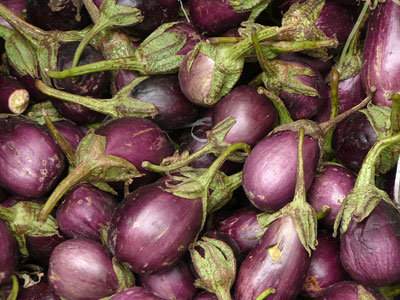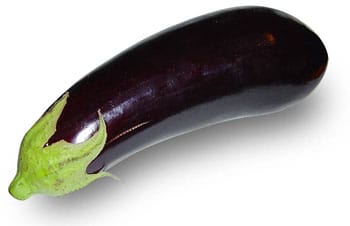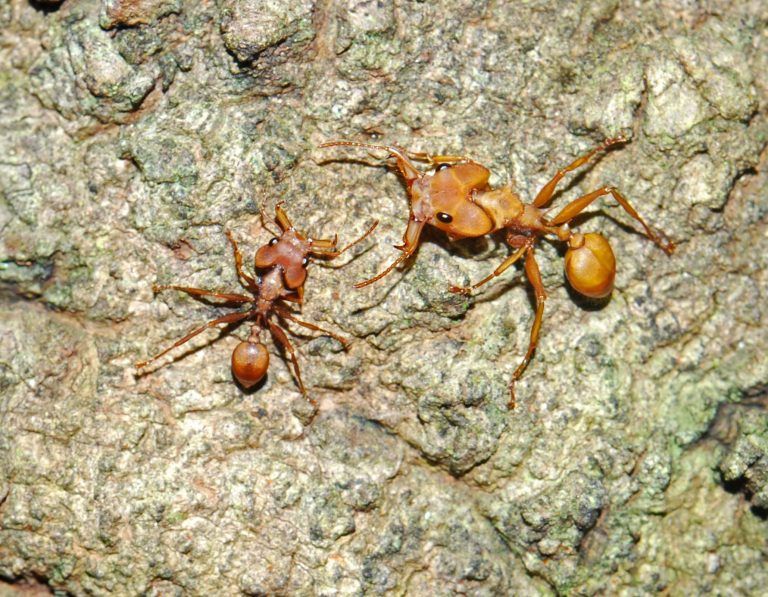Eggplants
Scientific Classification
| Kingdom: | Plantae |
| (unranked): | Angiosperms |
| (unranked): | Eudicots |
| (unranked): | Asterids |
| Order: | Solanales |
| Family: | Solanaceae |
| Genus: | Solanum |
| Species: | S. melongena |
| Binomial name: | Solanum melongena |
Eggplant (Solanum melongena) is a variety of the nightshade, generally called in British English as Aubergine. They otherwise call it guinea squash or melongene, garden eggs. It bears a fruit of the similar name (generally “Aubergine” in British English or “eggplant” in Australian and American English.
Anatomy
Eggplant is highly valued as a vegetable on account of its appearance, attractiveness and special taste. Eggplant belongs to the plant group of Solanaecae, also called night shades. They have a common relationship with potatoes, bell pepper as well as tomatoes. It has a spiny stem.
Habitat
This plant normally grows in India and eastern and southern parts of Asia since prehistoric times.
Preparation of soil for planting
Elevated beds well supplemented with compost, manure are a perfect combination for growing eggplants. However, any rich soil of pH value of 6.3 to 6.8 is sufficient for the plant. Even though the eggplant foliage is rough and leathery they are capable of sustaining the hot climate. Mulch the bottom of your eggplant with hay, biodegradable matter or striped leaves, thus maintaining the soil comparatively cool, sustaining moisture and preventing weeds.
Planting

Photo by: Nevit Dilmen
Follow the proportions printed on the label and enhance the existing fertility of the planting holes with a mixture of organic fertilizer or balanced time-release, and along with it add 2 inches of compost in order to sustain the fertilizer and retain the moisture in the soil. Arrange the plants to the same depth as they grow in the vessel. Prior to distributing the mulch, water the plant properly. Every fortnight, supplement the plants with liquid plant food like vegetable plant food and Bonnie herbs. The plant will stay healthy and well nourished.
Watering
While the eggplants are growing, give them a balanced fertilizer input and water them sufficiently.
Temperature and Humidity
Eggplants belong to the subtropics and tropics; hence they need a considerably higher temperature. Mulch the plants in order to retain the moisture of the soil.
Flowering and Maturing
You can improve the earliest stages of blossoming by manual pollination. As the stems are more or less woody, snip the fruits right over the calyx. The flowers are whole; they accommodate the male as well as the female parts and are likely to have cross-pollination and self-pollination.
Care
The eggplants are likely to fall with the heavy weights of the fruits; thus to make the plants stay steady, tie them to stakes. When you are planting the eggplant, push a stick in the ground about one or two inches away from the plant. You can do this at a later stage also.
If the eggplants are not watered thoroughly, they can turn bitter and deteriorate in size. Good constant supplies of water are essential, but never make the soil mushy. Soaker hoses or drip system is perfect.
Pest and Pesticides
Many of the pests and illnesses that affect the pepper (capsicum), tomato and potato, affects these eggplants too; on account of these, do not plant eggplants in the spaces where you had earlier planted closely related plants. You must provide for a gap of 4 years between successive production of eggplants. Proper hygiene and practice of rotation is very essential to manage the fungal disease. Verticillium is the vital fungus among them.
Harvest and Storage

Photo by: Horst Frank
The eggplant fruits taste bitter when you pluck them either overripe or under ripe. Hence, one of the arts that eggplant growers must perfect, is harvesting. If you cannot see the seeds in the fruit, you can assume that they are unripe, because you see dark and hard seeds in over ripe fruits. It is not possible to pluck the fruit freely with your hand, thus make use of the pruning shear to harvest your eggplant, leaving a short stem to the fruit. Rinse the fruit, dab it dry, pack it and preserve it in the refrigerator for days.
Varieties
Recommended Varieties
- “Easter Egg”
- “Black Beauty”
- “Little Fingers”
- Quick Serving Recipe Ideas
- To make at home, babaganoush, make a puree of the roasted eggplant and to it add tahini, lemon juice, garlic and olive oil.
- It is good as a sandwich filler of a vegetable dip.
- Grill pepper, lentils, garlic and onions, mix it with baked cubed eggplant and garnish it with balsamic vinaigrette.
- Make a mixture of pine nuts, feta, cheese and roasted pepper and stuff it in the Japanese small-sized eggplant.

Having discovered a fondness for insects while pursuing her degree in Biology, Randi Jones was quite bugged to know that people usually dismissed these little creatures as “creepy-crawlies”.







